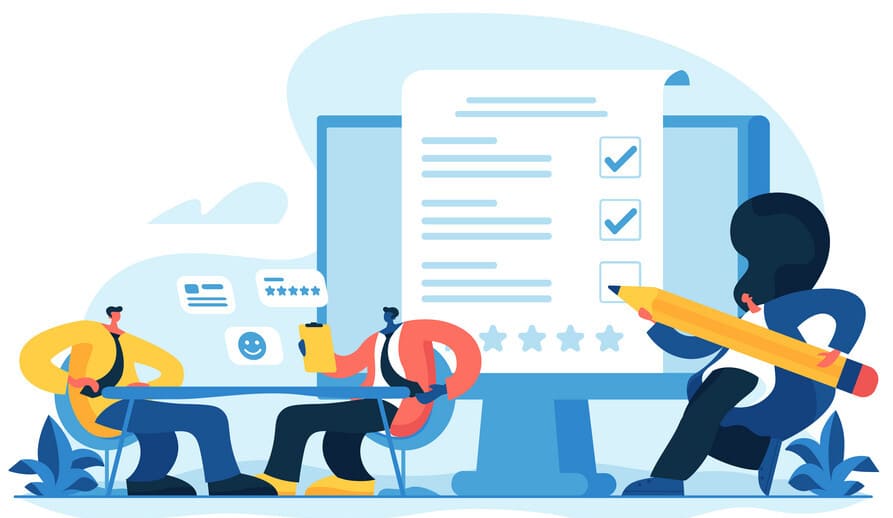Get access to the world’s top-rated assessments for your Employees
Help keep your employees happy, healthy, and productive with our engagement programs, suitable for both small and large businesses.
Happier employees, better business outcomes
Try MantraCare Assessment Program
"*" indicates required fields
What is the Anxiety Assessment?
Anxiety Assessment is a process of evaluating an individual’s emotional and mental well-being to determine if they are experiencing symptoms of anxiety. It involves answering questions about feelings, thoughts, behaviors, and physical symptoms to determine the severity of anxiety.

Benefits of the Anxiety Assessment for Corporate Employees
Anxiety can have a significant impact on an individual’s work performance, personal life, and overall health. Regular anxiety assessments can help companies identify employees who may be experiencing anxiety, so they can receive the necessary support and treatment. Some of the benefits of anxiety assessment in the workplace include:
Improved Employee Well-being: Regular anxiety assessments help employees identify symptoms of anxiety early, so they can receive appropriate support and treatment.
Increased Productivity: When employees receive support for anxiety, they are more likely to be productive and engaged at work.
Reduced Absenteeism: Anxiety can cause employees to miss work or be less productive while at work. Anxiety assessments can help companies identify employees who are struggling with anxiety and provide them with the support they need to stay at work.
Better Health Outcomes: Anxiety can have a significant impact on an individual’s overall health. Anxiety assessments can help employees get the support they need to manage anxiety and improve their overall health.
How to Launch the Anxiety Assessment in Your Company?
To launch an anxiety assessment program in your company, you will need to follow these steps:
Develop a Policy: Develop a clear policy that outlines the purpose of the anxiety assessment program, who is eligible for assessment, and how the results will be used.
Identify a Provider: Find a qualified provider to conduct the assessments, such as a licensed mental health professional.
Train Managers and Supervisors: Train managers and supervisors to recognize the signs of anxiety, how to refer employees for assessment, and how to support employees who receive a positive anxiety assessment.
Communicate with Employees: Communicate the anxiety assessment program to employees and encourage them to participate.
Provide Support: Ensure that employees who receive a positive anxiety assessment have access to support, such as counseling and treatment.
In conclusion, anxiety assessment is a valuable tool for companies to identify employees who may be struggling with anxiety and provide them with the support they need. Implementing an anxiety assessment program can help improve employee well-being, increase productivity, reduce absenteeism, and improve overall health outcomes.
Client's Sayings

“I had been feeling anxious and overwhelmed for a long time and didn’t know how to manage it. That’s when I discovered the anxiety assessment. The assessment provided me with a deeper understanding of my anxiety and what was causing it. The results were easy to understand and provided practical strategies for managing my symptoms. Since taking the assessment, I have noticed a significant improvement in my overall well-being and feel more in control of my anxiety. I highly recommend this assessment to anyone who is struggling with anxiety and looking for a way to better manage it. It has been a valuable tool that has helped me to live a more fulfilling life.”
Jasmine, HR
Global IT Services Company
Frequently Asked Question's
Anxiety disorders are marked by excessive fear or worry, as opposed to typical sensations of uneasiness or anxiety. Anxiety disorders are the most prevalent mental illnesses, afflicting almost one-third of all people at some time in their life.
There are 5 types of most common anxiety diorders:
- Generalized Anxiety Disorder
- Obsessive-Compulsive Disorder (OCD)
- Panic Disorder
- Post-Traumatic Stress Disorder (PTSD)
- Social Phobia (or Social Anxiety Disorder
An anxiety disorder is diagnosed by primary care physicians and psychiatrists when symptoms persist for six months on more days than not and severely impair the person’s ability to perform at home, work, or school.
Doctors conduct physical and psychological examinations to rule out other possible causes of anxiety symptoms. Symptoms that are comparable to those of an anxiety disorder might be caused by cardiovascular illness, thyroid issues, menopause, substance addiction, and/or medication side effects, such as from steroids.
Anxiety disorders are generally treated with psychotherapy, medication, or both.
- Psychotherapy
- Cognitive Behavioral Therapy (CBT)
- Self-Help or Support Groups
- Stress-Management Techniques
- Antidepressants
- Anti-Anxiety Medications
- Beta-Blockers

